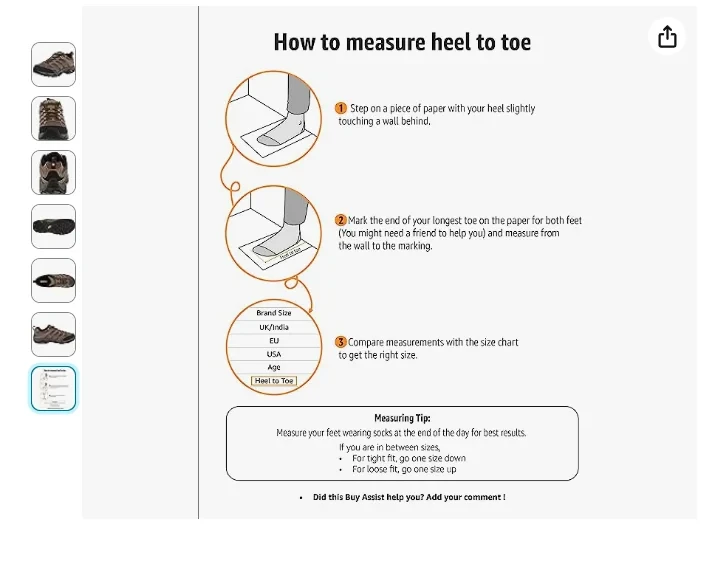Key Takeaways
Business process analysis (BPA) helps companies identify inefficiencies in internal operations
Businesses that launch a new product or undergo corporate restructuring often use BPA
Industry research can be used to identify key performance metrics
Business Process Analysis (BPA) is a methodology used to analyze process-related areas of business and improve efficiency. Specifically, BPA helps companies examine internal processes to improve revenue and reduce costs. Although business analysis (BA) and BPA differ in terms of the scope of their analysis, BPA is typically assigned to either business analysts or process architects, or both. Business analysts often analyze the context surrounding the problem and provide data insights, while process architects are directly involved in implementing processes. However, BPA requires more than just a business analyst or a process architect. To change a business process, companies also need to engage management, IT and other professionals. Before we break down BPA, let’s start with the basics.
What is a business process?
A business process is an organized group of activities that transform inputs into outputs, and can be formal or informal. Formal processes are documented and followed most of the time. Informal processes are either used due to a lack of formal documentation or because of a need to deviate from formal processes in unusual circumstances.
When should companies use Business Process Analysis?
Most often, companies use BPA when launching a new technology or a new process. Before the new technology is launched, an enterprise’s management needs to understand any inefficiencies that the old technology or process causes. These inefficiencies may include shipment delays, poor customer support or a high percentage of defective products. By conducting a cost-benefit analysis, companies are able to determine whether to implement the new technology or focus on other areas that may generate a higher return on investment.
Firms have increasingly turned to BPA in recent years, as the COVID-19 pandemic raised demand for certain products and reduced the need for others. Companies had limited time to adapt to the new operating environment, which made BPA crucial in helping organizations shift their focus effectively. For example, many organizations have used BPA to expand their digital offering. Other companies used BPA to offset the negative effects associated with supply chain disruptions. More recently, strong inflationary pressures and economic uncertainty have caused many organizations to utilize BPA to control costs and eliminate inefficiencies.
Organizations often turn to BPA as part of a larger strategic planning effort. For example, an organization can use BPA to better understand its internal processes as one step towards a broader objective.
What are the benefits of business process analysis?
You can probably already see that BPA is helpful in a range of situations. Here are some of the benefits of using business process analysis:
- Improve efficiency: For example, BPA can reduce the time and resources required for productive sales prospecting, onboarding employees, product development or creating marketing campaigns.
- Reduce costs: BPA can reduce personnel costs by decreasing time spent on tasks or removing redundancies in processes. BPA can also highlight costs savings for resources and materials.
- Clarify and improve policies and governance: For example, BPA can improve risk management and highlight where current IT and device security policies need improvement.
- Eliminate or reduce bottlenecks: BPA can help your organization optimize communications and process execution, so that one stage, such as approval, isn’t creating a backlog.
- Optimize adoption processes: BPA can highlight the sore points in adopting new technology or processes and provide improvements to training programs, ultimately increasing adoption rates.
- Improve release or deployment procedures: We all want campaign deployments and product releases to run smoothly – BPA can work through inefficiencies in these processes and help you put improvements in place.
- Assist in focus shifts: BPA can help your organization compete in an increasingly digital world. For example, BPA can assist in optimizing day-to-day processes for using specific technology, moving to remote models of work or smoothing the transition to providing products and services online.
- Improve company culture: Optimized processes improve employee experiences in the workplace.
- Increase engagement: Better customer service, website interactions or in-store processes strengthen your organization’s reputation and engagement.
Happy stakeholders, happy employees, happy customers – happy days!
Key steps in Business Process Analysis
So, that’s the basics. What are the steps involved in BPA?

1. Determine goals
The first step is to determine what needs to be achieved. Conducting a SWOT analysis, risk analysis or even a formal competitive analysis could help you identify areas for improvement in your organization. Taking a closer look at your organization’s performance using financial ratios can also be a helpful starting point. On a macro level, your goal may be to increase revenue or reduce costs, but keep in mind that BPA focuses on process-related improvements. This means that your goal must focus on a process improvement rather than a macro business change. For example, a BPA goal could be to improve labor efficiency. Highly repetitive tasks can often be automated, leading to a better completion time and fewer errors. In the sales process, for instance, follow-ups can be automated by using sales tracking software. In the case of the sales process, the goal may be to reduce time spent on writing follow-up emails, to improve the response rate, or both. One way to make sure the goal is well-defined is to use the SMART approach, which stands for specific, measurable, attainable, relevant and time-based.

2. Define the process
Once the goal is determined, you need to define the process that causes inefficiencies. In the sales process, for example, follow-ups may involve several steps, such as building a template for follow-up emails, adjusting the template based on information obtained from the clients, proofreading the email, and sending the email five minutes following the conversation.
When defining the process, make sure that the process scope is not highly extensive. Some process experts use the term end-to-end to define the boundaries of large, important processes. End-to-end design incorporates all activities that must happen to come up with a product concept. One way to break these processes down further is to use process hierarchy. The process hierarchy starts at the level of the entire organization and moves toward the most granular processes. The most common tool used by analysts and process architects during this step is SIPOC, which stands for Suppliers, Inputs, Process, Outputs and Customers. This tool helps summarize the inputs and outputs of one or more processes in a table form.
3. Analyze the process
You have several business process analysis techniques to choose from, depending on the defined goal. The most common analysis technique is value analysis, which shows the major and minor elements of the process based on the value added. Value is the ratio of function to costs. Therefore, value can be changed either by improving the function or reducing costs. When performing a value analysis, analysts typically compile a list of functions and costs in descending order. Cost-benefit ratios are often applied to such lists to estimate the net value of each activity.
Returning to our sales follow-up process example, the steps with the highest value could be sorted in the following order: adjusting a sales template based on information obtained from the client, proofreading the email, sending the email five minutes following the conversation, and building a template for follow-up emails. In this example, building a follow-up template is the lowest value-added element as it consumes a lot of time and always requires adjustments as new information arises.
Other popular analysis techniques include gap analysis, which compares actual performance with potential performance, and root cause analysis, which aims to determine why a problem occurs in the first place, and find a solution to the root cause.
4. Identify enhancements
After the process is analyzed and inefficiencies are detected, the next step is to work out what the necessary enhancements are. Often, improvements focus on aspects like eliminating bottlenecks, optimizing high-value processes or improving interaction with customers. For example, to increase the value of building a follow-up email, a salesperson could potentially use external tools that help building customizable emails faster based on client segments or other information.
During this step, you’ll need to make sure you take into account any potential externalities. Externalities are indirect costs or benefits caused by your business that affect third parties, which can include individuals or organizations – or even society on the whole. For example, improvements in speed may cause the quality of certain products and services to suffer, which is a cost to downstream users or consumers. Likewise, automation of certain processes may eliminate the ability to customize a product or a service, reducing demand for these products and services. Therefore, analysts must also conduct a thorough cost-benefit analysis before adjusting or introducing new processes.
5. Implement the process
Implementation often involves professionals across different departments, from management to analysts and IT professionals. You’ll need to ensure that the implementation team has enough resources to make effective changes. Corrections typically start at a small scale, followed by changes across the connected tasks. For example, to increase the value of building a template for follow-up emails, a sales department could install third-party software that analyzes all past emails and gives suggestions using predictive analytics.
6. Monitor the results
The final step is to monitor and control new standards and processes. Do new processes result in better KPIs? Do these processes cause any externalities? For example, third-party software may reduce the time required to write a follow-up email, but it may also reduce the email response rate. In other words, we have to make sure that we take externalities into account. Moreover, additional improvement opportunities may arise during this stage, so it is important to constantly monitor the new processes rather than taking a ‘set and forget’ approach.
BPA case studies
Now that we’ve unpacked the fundamentals, let’s take a look at some real-world examples of business process analysis.
Our first example relates to the backlog that French cosmetic company, Yves Rocher, experienced when processing new candidates. After performing BPA, Yves Rocher noticed that they were hiring twice as many candidates in peak season. To reduce the backlog, the company invested in software that auto-populates and auto-validates data, reducing the time spent internally on processing new candidates.
Howard Bank, a locally owned community bank based in the Greater Baltimore area, wanted to improve customer service and employee productivity. After conducting business process analysis, the bank realized that it takes new clients about an hour and a half to open a new account, reducing customer satisfaction and increasing the training required for new employees. The bank was able to reduce this time by 75% by using a new financial software, enabling employees to spend more time with new clients and improving clients’ satisfaction.
How can industry research improve BPA?
Industry research allows companies to benchmark their performance against their competitors and industry metrics. These metrics include revenue per establishment, revenue per employee, wage expenses and profit. Moreover, industry analysis is a great tool for tracking overall trends in industry revenue. Companies that grow at a faster rate than their peers typically have a competitive advantage such as strong marketing, loyal customers or differentiated products. In contrast, companies that grow at a slower rate than the industry average can use segment benchmarking as a starting point to analyze internal processes that cause inefficiencies. Company benchmarking gives you a clear view of your competitors, while state-level industry research provides an additional layer of information to companies seeking to compare their performance to the broader industry.
Industry research has been particularly useful following the outbreak of the COVID-19 pandemic, which led many companies to adjust internal processes due to social distancing measures, supply chain constraints and heightened regulatory environments. For example, businesses across the US have increased their investment in online operations to meet changing consumer needs. By having a clear understanding of ongoing trends, companies with access to industry data were able to more easily detect high value-added processes.
Final thoughts
Business process analysis helps companies optimize their internal processes to ultimately reduce costs, increase revenue, or both. BPA typically involves professionals across various departments who work together to make sure the new process flows smoothly across different dimensions. Once a new process is enacted, analysts continuously monitor the performance of the new standard against the previously established KPI. Businesses can use industry research to get the most out of BPA, taking advantage of industry-level metrics such as revenue per establishment and wage expenses.
Source from IBISWorld
Disclaimer: The information set forth above is provided by IBISWorld independently of Alibaba.com. Alibaba.com makes no representation and warranties as to the quality and reliability of the seller and products.




